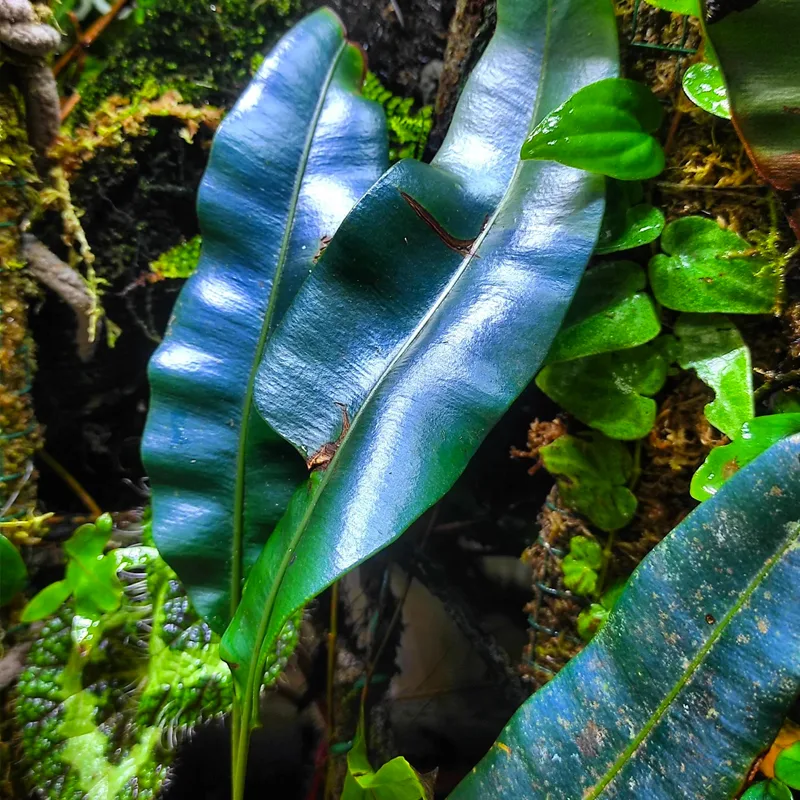
FAQs About Capsicum Cardenasii: My Journey with This Unique Pepper
When I first stumbled upon Capsicum Cardenasii, I was immediately captivated by its vibrant colors and intriguing characteristics. This pepper variety is not just a feast for the eyes; it has a rich history and unique flavor profile that sets it apart from the more commonly known peppers. In this article, I’ll share my experiences and insights about Capsicum Cardenasii, addressing some frequently asked questions that I’ve encountered along the way.
43 Species in Genus Capsicum
What Is Capsicum Cardenasii?
Capsicum Cardenasii is a lesser-known pepper species native to the Andes region of South America. Known for its striking appearance, it boasts colorful fruits that can range from green to red, often with a unique ribbed texture. This plant is primarily grown for ornamental purposes due to its attractive foliage and fruit, though it can also be used in cooking. What I love most about it is how it adds a pop of color to any garden.
How to Care for Capsicum Cardenasii?
Caring for Capsicum Cardenasii is relatively straightforward, but it requires attention to detail. Here are the key aspects I focus on:
- Sunlight: These plants thrive in full sun. I make sure they get at least six hours of direct sunlight daily. If you’re growing them indoors, a south-facing window works wonders.
- Soil: Well-draining soil is crucial. I mix regular potting soil with perlite or sand to enhance drainage. The soil pH should be slightly acidic to neutral (around 6.0 to 7.0).
- Watering: Consistent moisture is key, but I avoid overwatering. I water when the top inch of soil feels dry. Good drainage helps prevent root rot.
- Fertilization: During the growing season, I apply a balanced fertilizer every four to six weeks. This helps boost growth and fruit production.
- Temperature: Capsicum Cardenasii prefers warm temperatures, ideally between 70°F and 85°F. I bring my plants indoors if the nights get too cool.
How to Propagate Capsicum Cardenasii?
Propagating Capsicum Cardenasii can be a rewarding process. Here’s how I do it:
- Seeds: Start by collecting seeds from ripe fruits. After cleaning them, I let them dry for a few days.
- Sowing: I plant seeds in seed-starting mix about 1/4 inch deep. I keep the soil moist and cover the container with plastic wrap to maintain humidity.
- Germination: Germination typically takes 2 to 3 weeks. Once seedlings appear, I remove the plastic wrap and place them under bright light.
- Transplanting: When the seedlings develop a couple of true leaves, I transplant them into individual pots. This is when the real growth begins!
What to Plant with Capsicum Cardenasii?
Companion planting can enhance the growth of Capsicum Cardenasii. I often pair it with herbs like basil and oregano, which help deter pests. Additionally, marigolds are fantastic companions; they attract beneficial insects while repelling harmful ones. I find that planting these together creates a vibrant and healthy garden space.
Is Capsicum Cardenasii Toxic?
A common concern for many plant enthusiasts is toxicity. Fortunately, Capsicum Cardenasii is not considered toxic to humans or pets. However, its fruit can be spicy, so it’s wise to keep that in mind if you have curious pets around. I’ve found that enjoying the beauty of this plant without worrying about toxicity adds to its appeal.
Benefits of Growing Capsicum Cardenasii
Growing Capsicum Cardenasii comes with several benefits. Aside from its aesthetic appeal, it attracts pollinators like bees and butterflies to my garden. The fruit, while primarily ornamental, can be used to spice up dishes, giving them a unique flavor twist. Plus, cultivating this less common pepper variety helps promote biodiversity, which is something I’m passionate about.
Common Problems with Capsicum Cardenasii
Like any plant, Capsicum Cardenasii can encounter issues. Here are some problems I’ve faced:
- Pests: Aphids and spider mites can be troublesome. I regularly inspect my plants and use neem oil as a natural pesticide if necessary.
- Diseases: Fungal infections can occur, especially in humid conditions. I ensure good air circulation and avoid overhead watering to minimize this risk.
- Nutrient Deficiency: Yellowing leaves may indicate a nutrient deficiency. I keep an eye on my fertilization schedule to prevent this.
Compare with Other Similar Peppers
Capsicum Cardenasii often gets confused with other ornamental peppers like Capsicum Annuum. While both are visually stunning, Capsicum Annuum is generally more widely cultivated for culinary uses. I’ve found that Capsicum Cardenasii has a more complex flavor profile, which can be exciting in the kitchen.
Conclusion
Capsicum Cardenasii is a unique and vibrant addition to any garden. With the right care, it can flourish, providing both beauty and a touch of spice to your life. My experiences with this plant have been nothing short of rewarding, and I hope this FAQ helps you appreciate its charm as much as I do. Whether you’re a seasoned gardener or just starting, I encourage you to give Capsicum Cardenasii a try!
If i die, water my plants!



